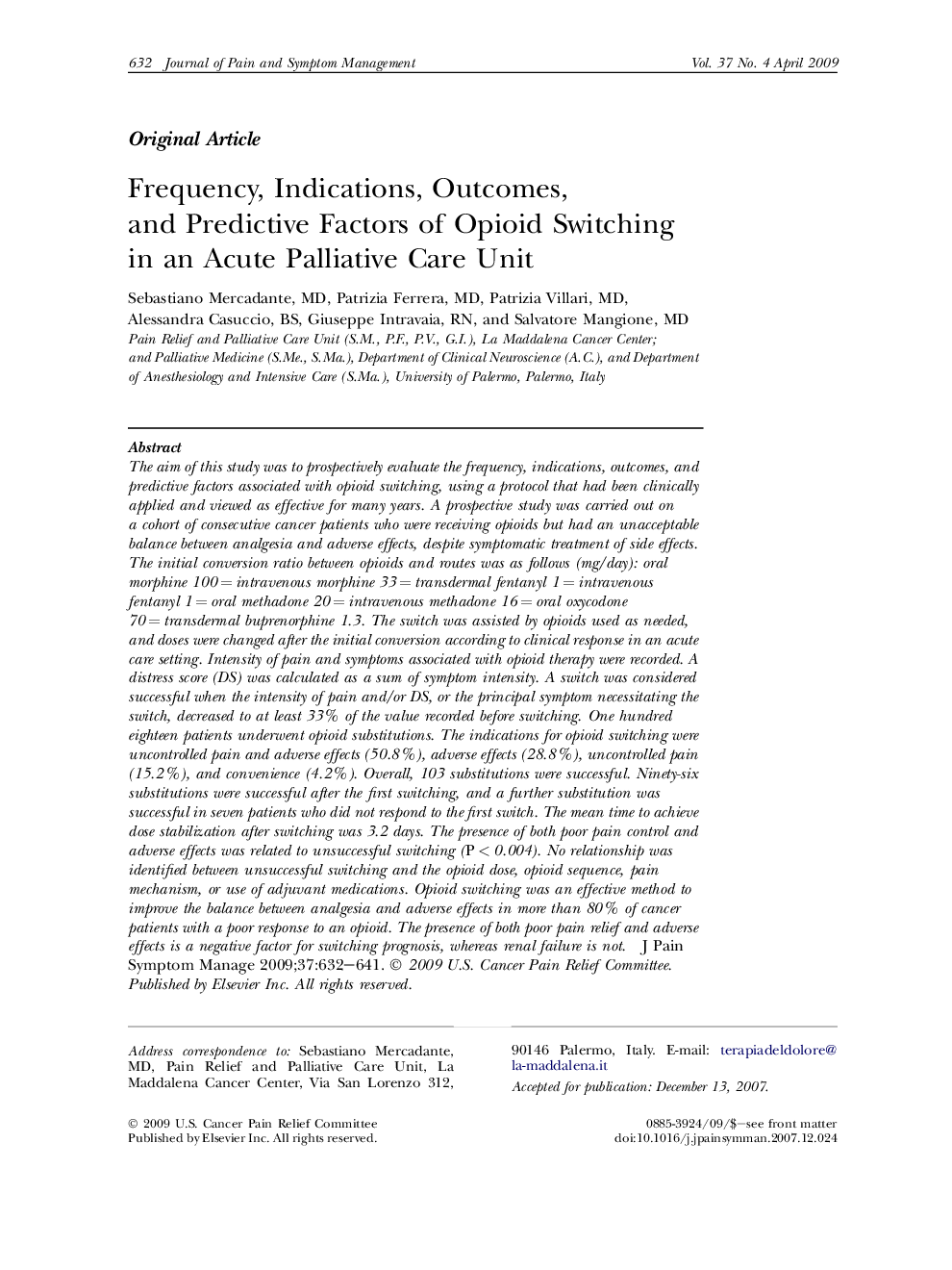| کد مقاله | کد نشریه | سال انتشار | مقاله انگلیسی | نسخه تمام متن |
|---|---|---|---|---|
| 2730681 | 1147266 | 2009 | 10 صفحه PDF | دانلود رایگان |

The aim of this study was to prospectively evaluate the frequency, indications, outcomes, and predictive factors associated with opioid switching, using a protocol that had been clinically applied and viewed as effective for many years. A prospective study was carried out on a cohort of consecutive cancer patients who were receiving opioids but had an unacceptable balance between analgesia and adverse effects, despite symptomatic treatment of side effects. The initial conversion ratio between opioids and routes was as follows (mg/day): oral morphine 100 = intravenous morphine 33 = transdermal fentanyl 1 = intravenous fentanyl 1 = oral methadone 20 = intravenous methadone 16 = oral oxycodone 70 = transdermal buprenorphine 1.3. The switch was assisted by opioids used as needed, and doses were changed after the initial conversion according to clinical response in an acute care setting. Intensity of pain and symptoms associated with opioid therapy were recorded. A distress score (DS) was calculated as a sum of symptom intensity. A switch was considered successful when the intensity of pain and/or DS, or the principal symptom necessitating the switch, decreased to at least 33% of the value recorded before switching. One hundred eighteen patients underwent opioid substitutions. The indications for opioid switching were uncontrolled pain and adverse effects (50.8%), adverse effects (28.8%), uncontrolled pain (15.2%), and convenience (4.2%). Overall, 103 substitutions were successful. Ninety-six substitutions were successful after the first switching, and a further substitution was successful in seven patients who did not respond to the first switch. The mean time to achieve dose stabilization after switching was 3.2 days. The presence of both poor pain control and adverse effects was related to unsuccessful switching (P < 0.004). No relationship was identified between unsuccessful switching and the opioid dose, opioid sequence, pain mechanism, or use of adjuvant medications. Opioid switching was an effective method to improve the balance between analgesia and adverse effects in more than 80% of cancer patients with a poor response to an opioid. The presence of both poor pain relief and adverse effects is a negative factor for switching prognosis, whereas renal failure is not.
Journal: Journal of Pain and Symptom Management - Volume 37, Issue 4, April 2009, Pages 632–641